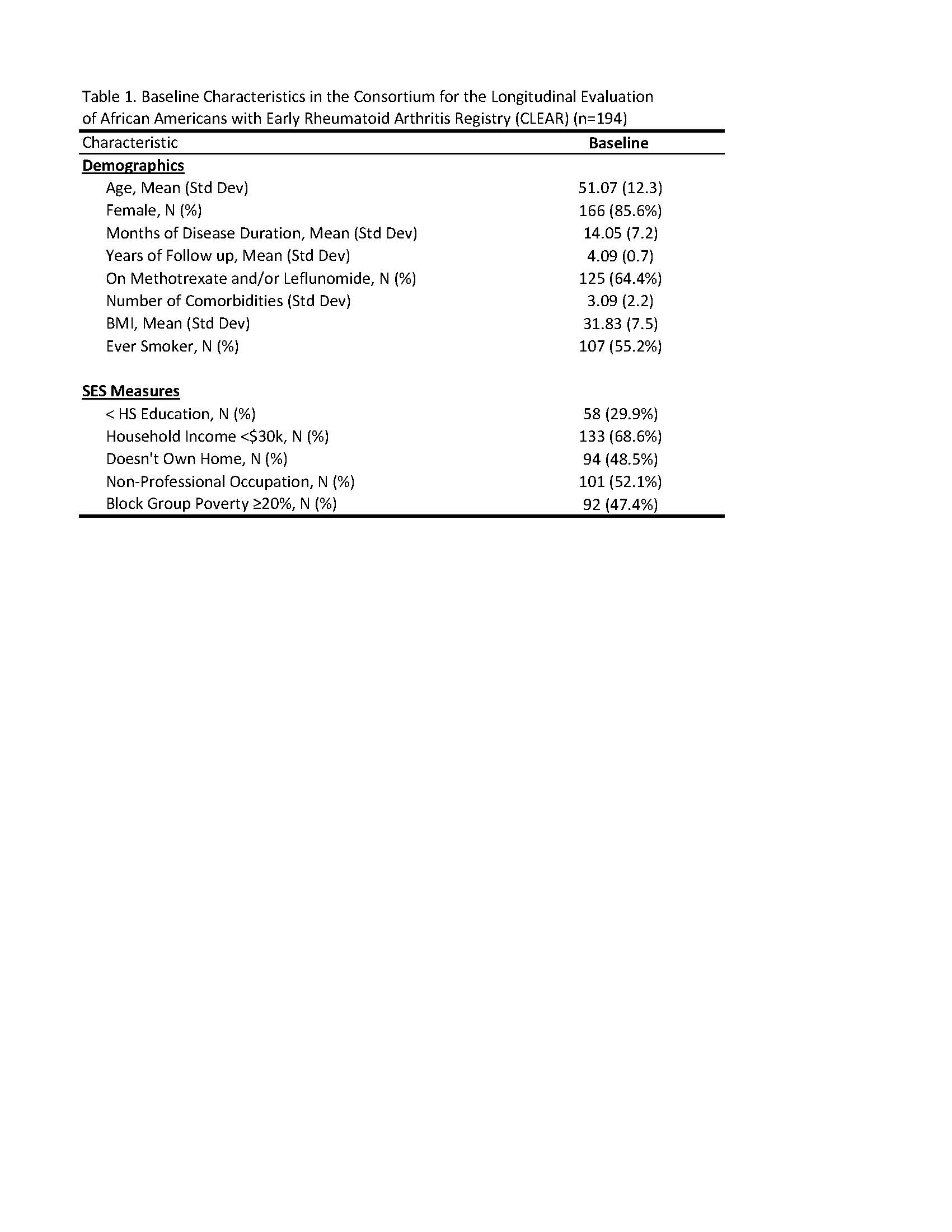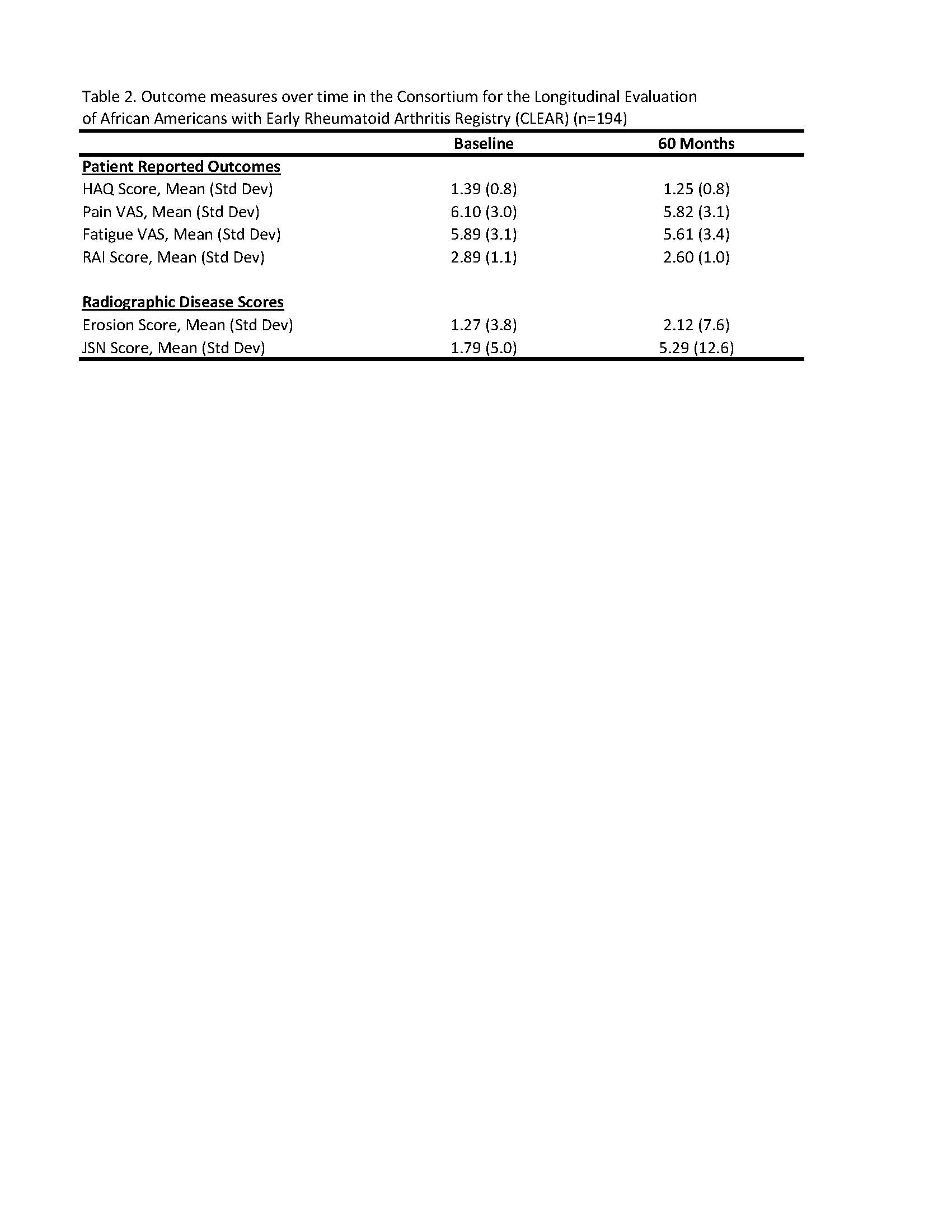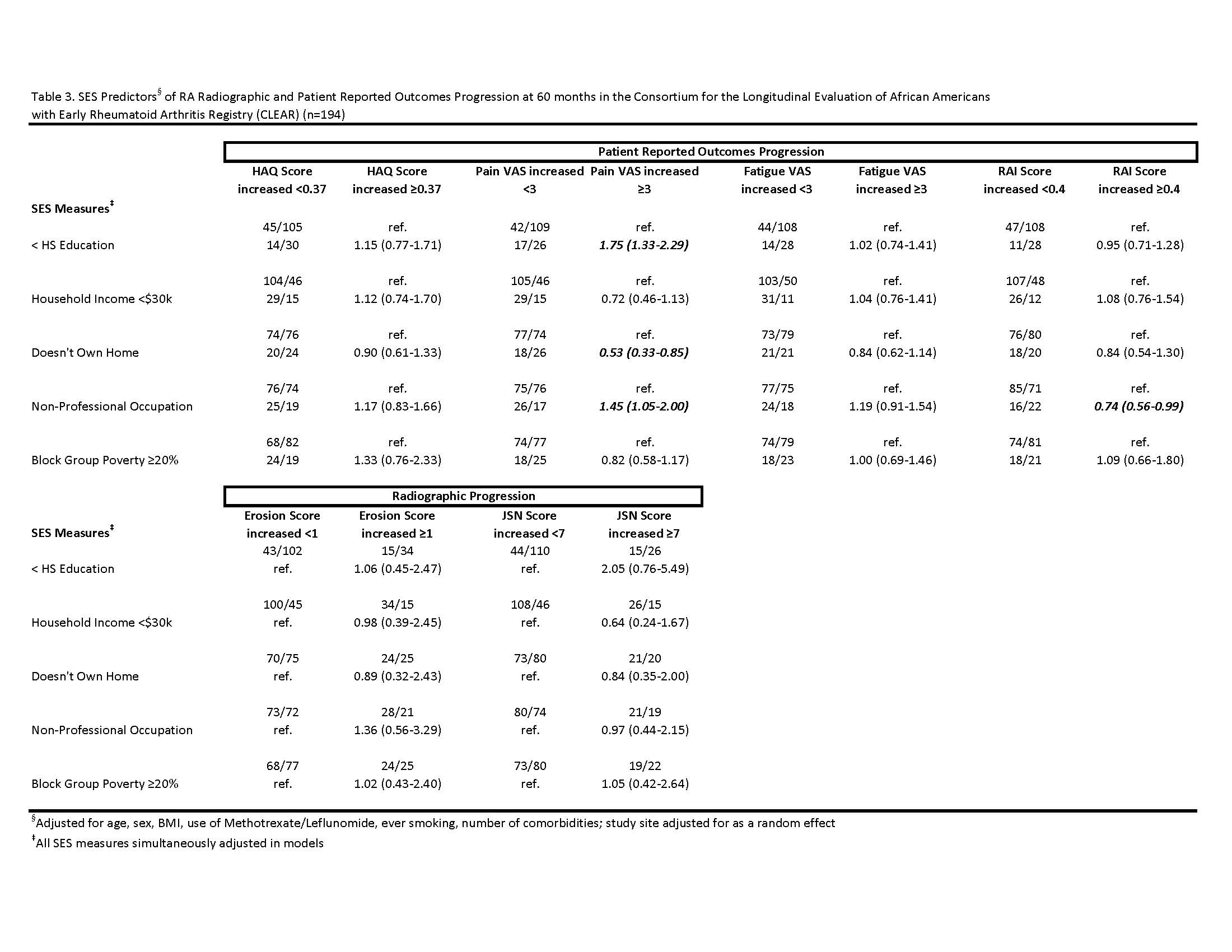Session Information
Session Type: ACR/ARP Abstract Session
Session Time: 11:00AM-12:30PM
Background/Purpose: In prior cross-sectional analyses of African Americans (AA) with RA, we observed that low education, income and home ownership were associated with clinical damage and patient reported outcomes (PROs) among those with mean disease duration of 7.8 years. However, when restricted to those with disease duration of < 2 years, associations with PROs remained, but were no longer observed with damage, most likely due to the low damage scores in individuals with early disease. Therefore, we hypothesize that socioeconomic status (SES) measures may be related to clinical progression and PRO worsening in AA with early RA.
Methods: We conducted analyses using data from 194 individuals with RA who completed a follow-up at 5 years of disease duration. Patients who had been diagnosed in the previous 2 years were enrolled from 5 medical centers in the southeastern US. SES measures were educational attainment (< high school diploma [< HS EDUC], or ≥HS); occupation (professional or not [Non-Pro OCC]); home ownership (yes or non-HOME); annual household income (≤$30,000 [≤$30K INC] or >$30K); and percent block group poverty (BGP ≥20% or < 20%). Outcomes were based on radiographs (erosion and JSN score) and PROs (Health Assessment Questionnaire [HAQ], self-rated pain and fatigue from visual analog scales [VAS] and the Rheumatology Attitudes Index [RAI]). Progression was defined as those who were in the highest quintile of disease progression (top 20% of increases in severity of outcome scores): erosions ≥1, JSN ≥7, HAQ ≥0.37, Pain and Fatigue VAS ≥3, RAI ≥0.4. We multiply imputed missing values of covariates. Multi-level logistic regression models with study site considered as a random effect were used to estimate odds ratios (OR) and 95% confidence intervals (CI) for the association between SES measures at baseline and progression. All models were adjusted for age, sex, BMI, number of comorbidities, smoking, disease duration at study entry, methotrexate/leflunomide use, and were simultaneously adjusted for other SES measures.
Results: Baseline demographics are shown in Table 1. At 5 years disease duration, mean outcome scores tended to increase for both erosion scores and JSN scores, but decreased for PROs (Table 2). We did not observe any association between SES measures and either erosion or JSN score progression (Table 3). However, < HS EDUC and Non-Pro OCC were both associated with worsening pain VAS, while non-HOME was inversely associated with worsening pain VAS, and non-Pro OCC was inversely associated with worsening RAI.
Conclusion: As with the previous cross-sectional analyses examining associations between SES measures and outcomes in AAs with < 2 years of disease who are being treated with RA therapies, we did not observe associations between SES and radiographic progression in adjusted analyses. However, some SES measures were associated with increased Pain VAS, after simultaneously adjusting for all SES measures and covariates. These results are possibly due to the relatively short disease duration (5 years) and length of follow-up (4 years) of the population and warrants further research with longer periods of follow-up.
To cite this abstract in AMA style:
Cleveland R, Astrike-Davis E, Jonas B, Callahan L. Associations of Socioeconomic Status with Rheumatoid Arthritis (RA) Progression in African Americans with Early Disease [abstract]. Arthritis Rheumatol. 2019; 71 (suppl 10). https://acrabstracts.org/abstract/associations-of-socioeconomic-status-with-rheumatoid-arthritis-ra-progression-in-african-americans-with-early-disease/. Accessed .« Back to 2019 ACR/ARP Annual Meeting
ACR Meeting Abstracts - https://acrabstracts.org/abstract/associations-of-socioeconomic-status-with-rheumatoid-arthritis-ra-progression-in-african-americans-with-early-disease/



